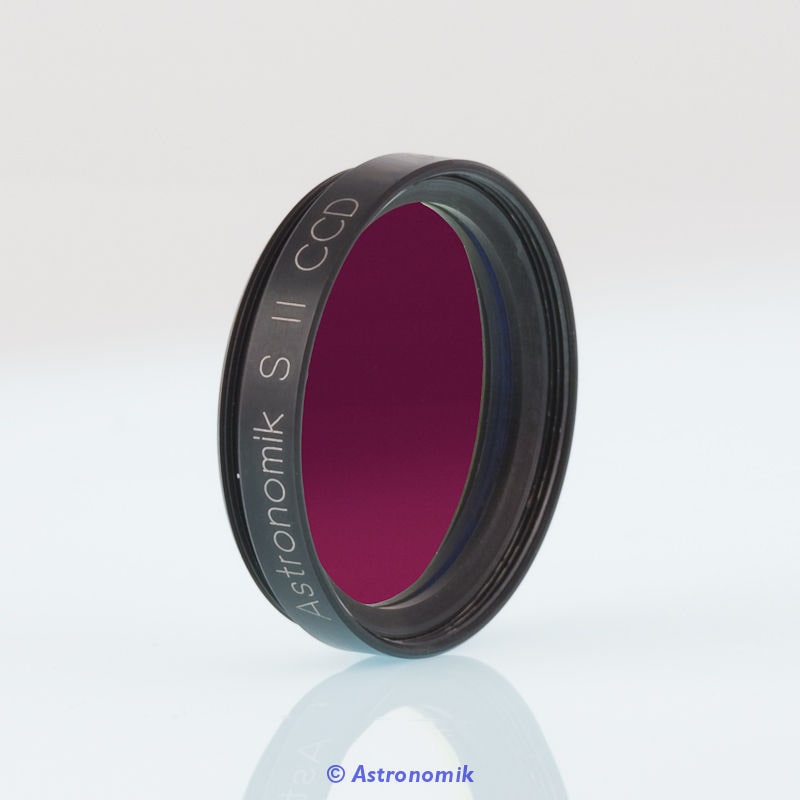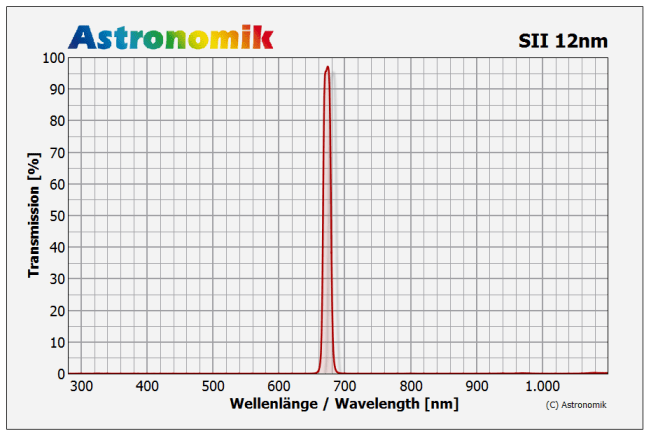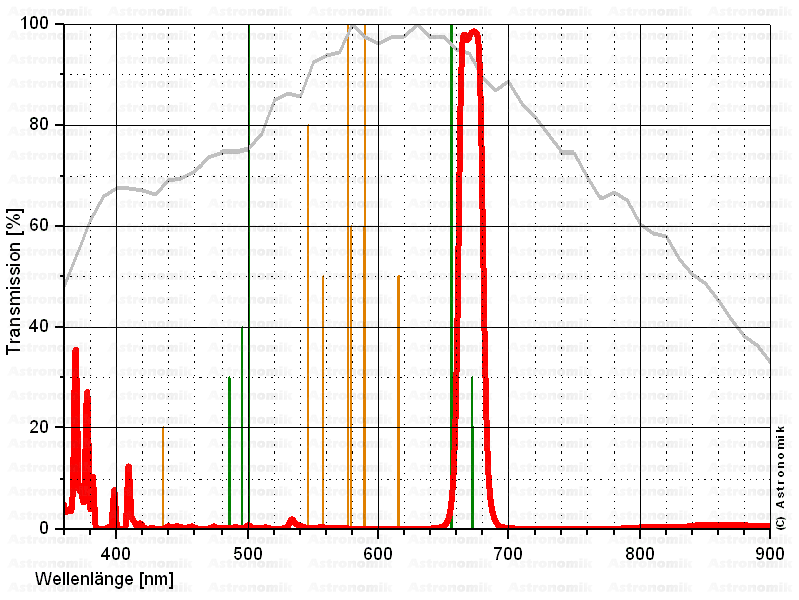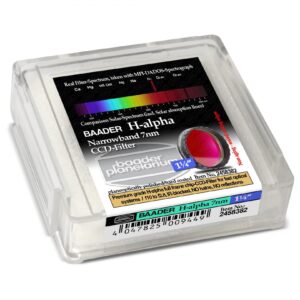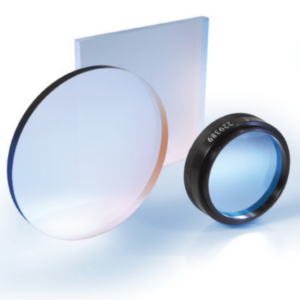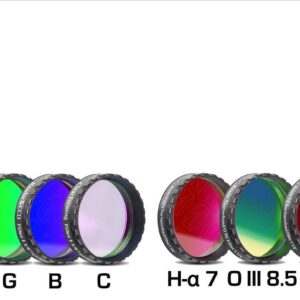Astronomik SII 12nm Filter
135,00€ – 308,00€
It allows light to pass through the doubly ionized sulfide of the emission nebulae.
The Astronomik SII-CCD filter is a narrow-band-filter for CCD photography.The filter lets the light of the ionized sulfur (SII) pass, and blocks nearly the whole remainder of the visual spectrum as well as IR, in which the CCD is sensitive.
The full width at half maximum (FWHM) of 12nm is optimal suitable for common CCD cameras and allows the use of very fast optics. The range of application extends from 1:2.8 to 1:15. Transmission losses and chromatic distortions, which arise with other filters, only occur with Astronomik filters when extremely bright aperture ratios of 1:2 and more come into play. It should be noted, that the filter has a transmission of up to 99%.
Another advantage of the 12nm filters is the good availability of guiding stars for cameras with a built-in-autoguider (SBIG). If you use a very strong filter like Astronomik 6nm filter you often won’t find a usable guidestar.
The Astronomik SII CCD filter increases the contrast between objects, in this case between those with SII emission lines and the skyglow background. Also, Astronomik SII-CCD filter completely suppresses the emission lines of artificial lighting (mercury (Hg) and sodium (Na)) and skyglow.
Main use
The Astronomik SII CCD increases the contrast between objects, in this case between the SII emission line and the skyglow background. Astronomik SII CCD completely suppresses the emission lines of artificial lighting (mercury (Hg) and sodium (Na)) and skyglow. Due to the high optical quality of the Astronomik H-alpha-CCD substrate you will see the same needle-sharp stars as you would from your regular telescope.
Other uses
-
-
- Using the new H-alpha-CCD and the new SII-CCD filters you can obtain three-color images of emission line objects (gas nebulae) from locations with very strong light pollution. To do so, you would take an image in three different wavelengths, select each one as a color-channel in Photoshop and paste them together as one single color image.
- If you plan to create color images from emission line data, Astronomik CLS-CCD filter is a great choice for the Luminance channel.
-
It is not suitable for use in visual, nor for solar observation.
Transmission curve:
Datos técnicos:
- typ. transmission of 95% at both SII lines (671,7nm und 673,0nm)
- Complete blocking of all disturbing wavelength ranges in the infrared
- Parfocal with other Astronomik filters
- Glass thickness: 1mm
- Completely resistant against high humidity, scratches, and aging effects
- Diffraction limited, the filter will not reduce the optical performance of your telescope!
- Astronomik filters are delivered in a high-quality, long-lasting, filter box
- Since 2008 we do ship filters with a completely new design. Any kind of halo or strange reflection is a matter of past
Available in other sizes and formats. If you do not find the size you want, contact us at info@lunatico.es.
| Filter thread | Clip-Filter EOS APS-C, Clip-Filter EOS XL, 1,25", 2", Ø 31, Ø 36, Ø 50, 50x50mm. |
|---|
You may also like…
-
Baader CCD Complete Filterset II (L-RGB-C / H-alpha 7nm / OIII 8.5nm / SII 8nm) – 1,25″
659,00€ (price without TAX 544,63€) Read more


